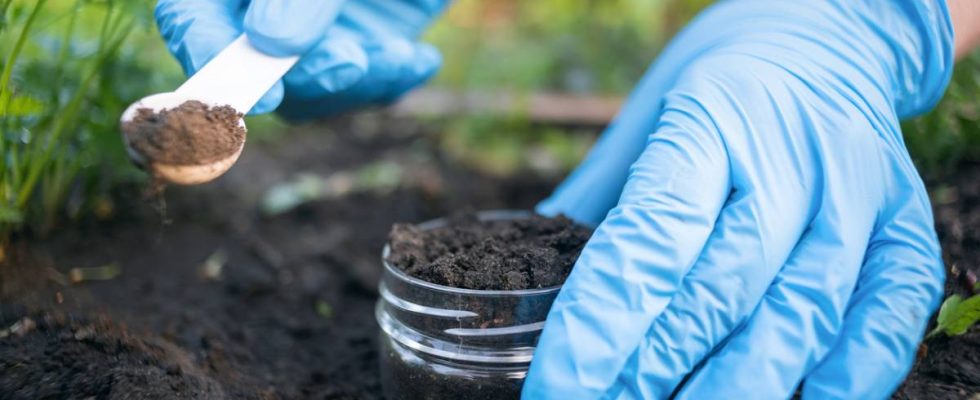Removal of the land
This is an important operation that must be carried out carefully.
First operation : Strip the surface of the ground to remove stones, plant debris, etc.
To collect correctly, follow the following rules. Only a laboratory will give you a truly reliable analysis.
The depth
- Lawn : Take a sample from the surface layer (5 to 15 cm deep).
- Vegetable garden, orchard, massif : Allow for a greater depth (20 to 25 cm) corresponding to the height cultivated. In both cases, for each take, make an opening with a spade and take a 5 cm thick slice across the entire thickness of the layer.
The good moment
You can collect in any season. But avoid doing this:
- in soggy ground,
- less than 2 months after adding mineral fertilizers;
- less than 6 months after adding limestone or organic amendment (manure).
Collect your samples in the most homogeneous areas. Avoid border areas (woods, hedges), the edges of watercourses or paths, old paths, old hedges, embankments or areas where soil and manure are stored.
For fruit trees, do not take from the border rows.
If you take multiple shots, remember to label them with a location label before posting them for analysis.
The nature of the land
- Your terrain is homogeneous : It has the same apparent nature of soil. Take several samples with a spade from different locations. Then mix them well. You will send by post the weight required by the laboratory: from 150 g to 1 kg depending on the analysis carried out.
- Your terrain is heterogeneous : It presents different colors, irregular vegetation zones, a wet or dry surface. Then make up as many samples as there are types of soil.
Earth analyzes
A complete study of your soil involves two stages: physical analysis and chemical analysis.
Physical analysis
It provides information on different points.
- Particle size : It characterizes your soil, establishes the percentage of elements in your land (clay, sand, silt).
- Organic materials : Their content must be between 30 and 45%. Otherwise, plan to add manure, compost and peat. Their presence is important because they lighten heavy soils and give body to light soils. The analysis also indicates the C/N ratio between carbon and nitrogen: it gives the state of evolution of organic matter.
- The exchange capacity : This element allows you to know the ability of your soil to fix limestone, magnesium, potassium, aluminum, zinc, copper and manganese. Sandy soils have low exchange capacities, so potash and magnesia are likely to migrate more easily at depth. Knowing the levels of exchangeable potassium and magnesium will make it possible to assess soil availability.
- Limestone : The analysis gives the total limestone and the active limestone which is the fraction of limestone less than 20 microns. The chlorosis power of soils is linked to a high level of active limestone. Its knowledge helps guide the choice of fruit tree rootstocks.
Chemical analysis
It defines the following characteristics:
- pH : It expresses the acidity or alkalinity of the soil. The good average is between 6.5 and 7.5. Below, be sure to lime. Above, acidify your land with sulfate-based fertilizers.
- Exchangeable cations :
- K20 (potassium oxide) : Its normal content varies from 360 to 440 mg/kg. Potash improves disease resistance, promotes the size of fruits and vegetables and influences the taste of fruits.
- MgO (magnesium oxide) : Its content must be between 225 and 275 mg/kg. Magnesia is an important constituent of chlorophyll. It gives green color to plants.
- P205 (phosphoric anhydride) : Its normal content varies from 340 to 420 mg/kg. Phosphorus is essential for the formation of roots, flowers and ripening of fruits.
- Other important cations are calcium oxide (CaO) and sodium oxide (Na20).
- Trace elements : Copper, zinc, manganese, boron. These 4 trace elements are just as important as the so-called major elements (nitrogen, phosphorus, potassium). They are found in the soil and are absorbed by the plant in much smaller quantities. Their dosage makes it possible to check a deficiency or an excess.
The analyzes are far from being as complete in all laboratories. However, everyone studies the main elements in order to recommend a typical fertilizer to improve the soil in your garden.

